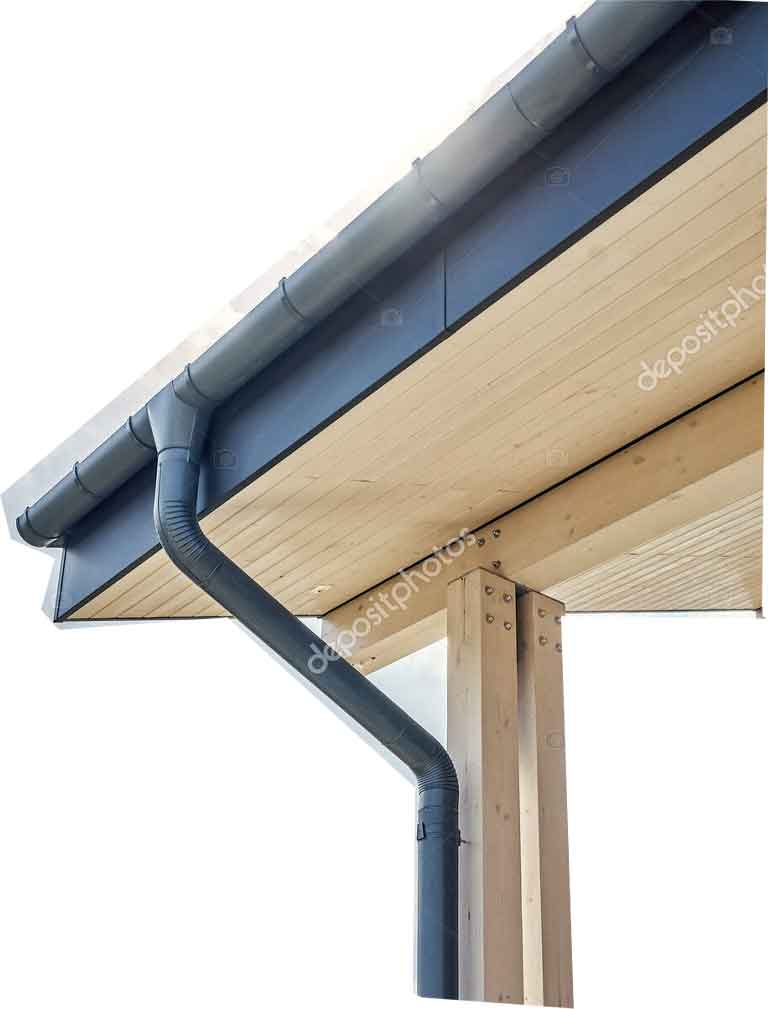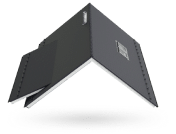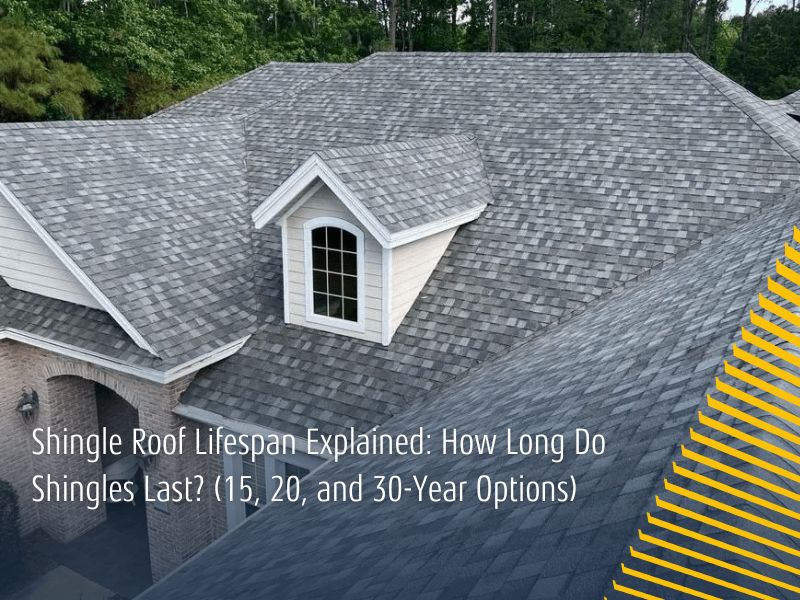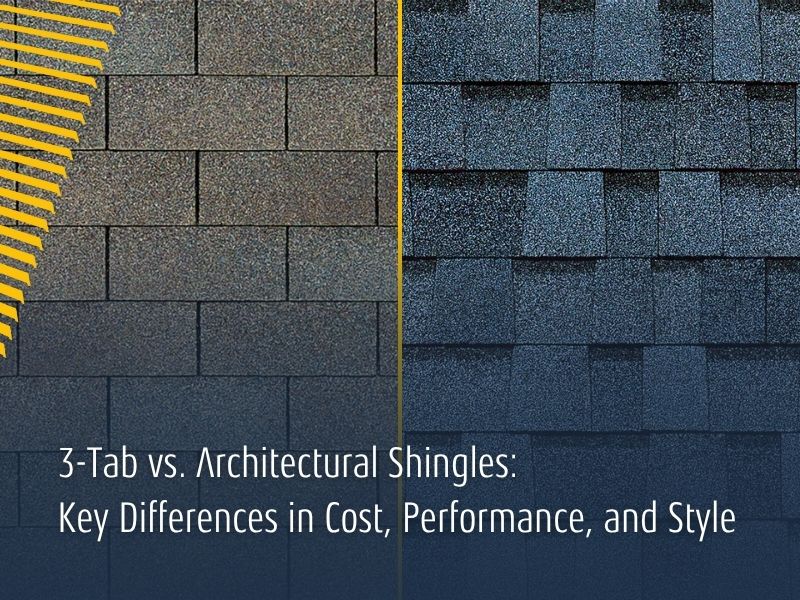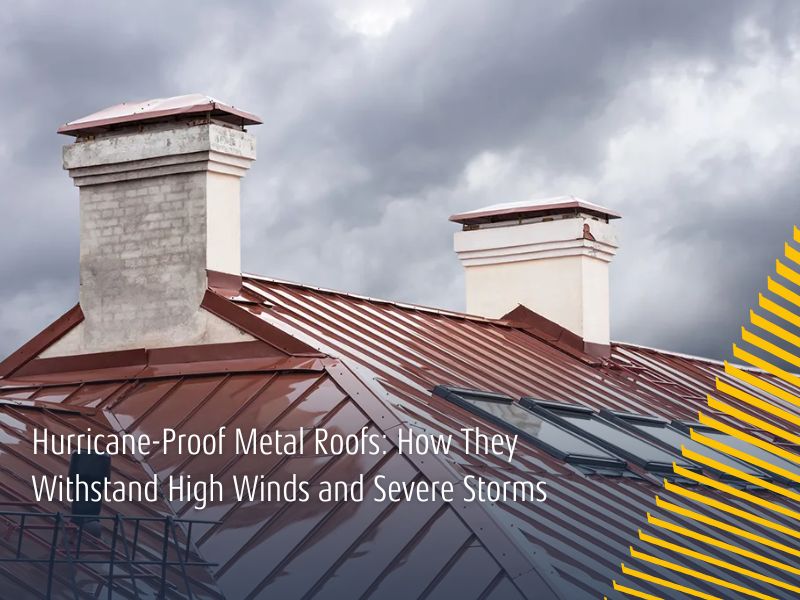Flat roofs are often more affordable, easier to install, and suitable for modern architectural designs, especially in dry or urban climates. However, gable roofs offer better drainage, improved attic space, and superior performance in rainy or snowy regions. The “better” option depends on your location, design needs, and budget. For homeowners in Florida, it’s recommended to choose the right roof for your home based on structural load, wind resistance, and long-term maintenance needs.
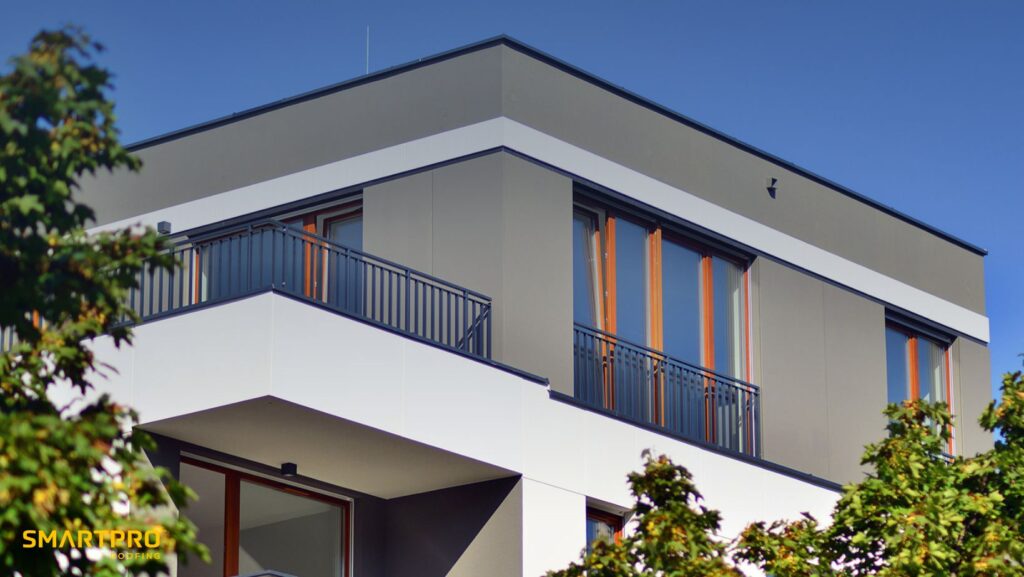 Let’s take a closer look at what makes flat roofs appealing, and where they fall short.
Let’s take a closer look at what makes flat roofs appealing, and where they fall short.
 Just like flat roofs, gable roofs come with their own set of advantages and drawbacks. Understanding these can help you make the right choice based on your specific needs and location.
Just like flat roofs, gable roofs come with their own set of advantages and drawbacks. Understanding these can help you make the right choice based on your specific needs and location.
What Is a Flat Roof?
A flat roof is exactly what it sounds like, a type of roof with little to no pitch. While not completely flat, these roofs typically have a slope of around 1 to 10 degrees to allow for water runoff. Commonly found in commercial buildings and modern residential architecture, flat roofs provide a sleek and minimalistic look that’s increasingly becoming popular in urban homes. Flat roofs are often constructed using materials like modified bitumen, PVC, EPDM rubber, or built-up roofing (BUR). One of the main selling points is that flat roofs are easier, quicker and cheaper to install due to their simpler design and reduced labor. Another bonus? They create usable space, think rooftop gardens, patios, or HVAC systems. However, drainage is one of the biggest concerns with flat roofs. Unlike steep-pitched roofs that allow rain and snow to slide off easily, flat roofs can struggle with water pooling if not properly designed and maintained. This makes them less ideal for areas with heavy rainfall or snowfall unless advanced waterproofing solutions are used. So, is a flat roof right for you? If you live in a dry or warm climate and want a modern aesthetic with multifunctional rooftop space, a flat roof might just be the perfect fit.What Is a Gable Roof Style?
A gable roof, also known as a pitched or peaked roof, is one of the most common roof types in the U.S. It features two sloping sides that meet at a ridge, forming a triangular shape. Gable roofs have been a staple in architecture for centuries due to their simplicity, affordability, and excellent weather performance. Because of their steep pitch, gable roofs are excellent at shedding water and snow. This makes them highly effective in regions that experience heavy precipitation. The angle also allows for attic space, which can be used for insulation, storage, or even additional living space. Gable roofs are typically covered with materials such as asphalt shingles, wood shakes, metal panels, or tiles, depending on the desired aesthetic and durability requirements. Structurally, they are strong, but they must be well-braced in areas prone to high winds, like coastal regions. When you think of the classic American home, chances are you’re picturing a house with a gable roof. It’s a traditional design that continues to hold its value due to its practicality and visual appeal. So, for homeowners wanting a timeless look with built-in protection from the elements, a gable roof is often the go-to choice.Flat Roof vs Gable Roof: Key Differences
Let’s dig into the most critical comparison areas to help you determine which roof type is better suited for your needs:| Feature | Flat Roof | Gable Roof |
| Design Style | Modern, minimalist | Classic, traditional |
| Installation Cost | Lower | Moderate to high |
| Drainage Efficiency | Requires special systems | Excellent natural drainage |
| Maintenance Needs | Higher, especially for drainage | Lower in dry areas, moderate in wet |
| Attic/Usable Space | Usable rooftop (e.g., garden) | Attic space, insulation-friendly |
| Weather Resistance | Best in dry climates | Best in rainy/snowy climates |
| Wind Resistance | Better in high winds (low profile) | Needs extra bracing in high winds |
| Longevity | 10–25 years (depends on material) | 20–50 years (depends on material) |
Pros and Cons of Flat Roof Type
 Let’s take a closer look at what makes flat roofs appealing, and where they fall short.
Let’s take a closer look at what makes flat roofs appealing, and where they fall short.
Pros of Flat Roofs
- Affordable Roof Installation: Flat roofs require fewer materials and are simpler to construct, making them a cost-effective choice.
- Modern Appeal: Perfect for contemporary and minimalist designs, offering a sleek architectural look.
- Extra Usable Space: You can install solar panels, HVAC units, or even a rooftop garden or deck.
- Easy Access: Maintenance tasks like cleaning gutters or inspecting leaks are much safer and easier.
Cons of Flat Roofs
- Poor Drainage: Without proper drainage systems, water can accumulate and cause damage.
- Shorter Lifespan: Roofing materials used for flat roof types generally don’t last as long as those for pitched roofs.
- Higher Maintenance: You’ll need to inspect the roof more often to catch pooling or leakage early.
- Limited Insulation: Flat roofs don’t offer attic space, which can limit insulation options.
Pros and Cons of Gable Roofs
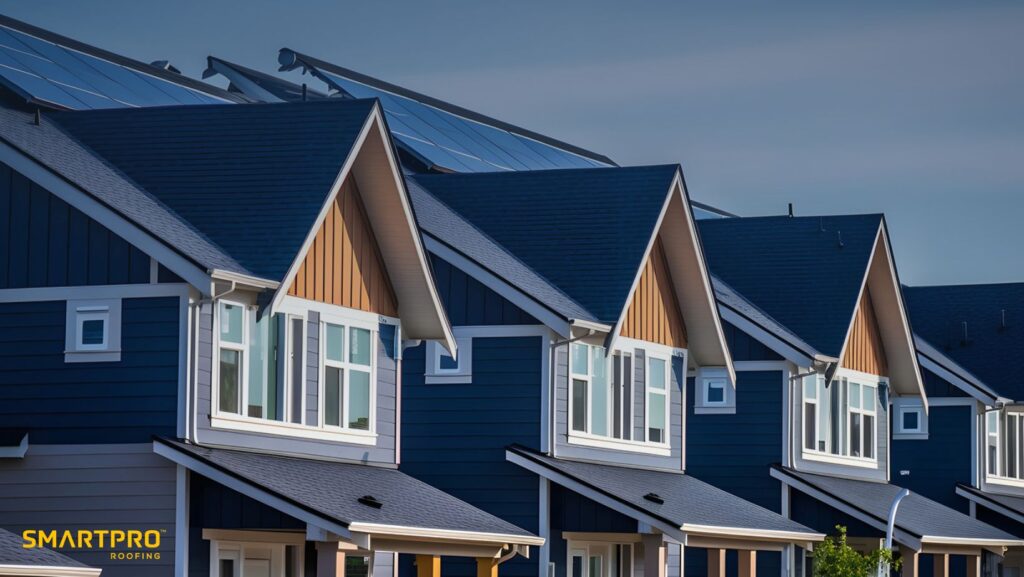 Just like flat roofs, gable roofs come with their own set of advantages and drawbacks. Understanding these can help you make the right choice based on your specific needs and location.
Just like flat roofs, gable roofs come with their own set of advantages and drawbacks. Understanding these can help you make the right choice based on your specific needs and location.
Pros of Gable Roofs
- Excellent Drainage: The steep slope of a gable roof ensures that rain and snow slide right off, preventing water damage and leaks.
- Attic Space: Gable roofs naturally create more internal space, often allowing for an attic or vaulted ceiling.
- Energy Efficiency: The extra space can be used for insulation, improving the energy efficiency of your home.
- Ventilation: The added height allows for better airflow and ventilation within the home.
- Weather Protection: With proper bracing, gable roofs can withstand a variety of weather conditions, particularly in cold and wet climates.
Cons of Gable Roofs
- Wind Vulnerability: In areas prone to hurricanes or strong winds, the peaked shape can be more susceptible to damage unless reinforced.
- Higher Cost: More materials and labor are typically required, making gable roofs a more expensive option upfront.
- Require more maintenance of Gutters and Eaves: Gables often require extra attention to keep gutters clean and prevent ice dams in colder climates.
When to Choose a Flat Roof?
Flat roofs shine in specific environments and scenarios. Here are a few where a flat roof may be the best choice:Urban Homes and Modern Architecture
If your home is located in a dense urban area or you’re building a modern-style house, a flat roof complements the sleek lines and minimalistic features of contemporary architecture. It can also provide a usable outdoor space where land is limited.Commercial Buildings
Most commercial and industrial buildings use flat roofs because they offer easy installation of HVAC units, solar panels, and satellite systems.Eco-Friendly Builds
Flat roofs are ideal for green roofs and solar installations, offering a platform that’s easy to work with. Rooftop gardens or even rainwater collection systems can be implemented with ease.Budget Projects
Due to their simple construction and reduced material use, flat roofs are excellent for homeowners working with a tight budget. However, flat roofs are best suited for dry, warm climates where the risk of heavy rainfall or snow accumulation is minimal. Think areas like southern California, Arizona, or parts of Texas.When to Choose a Gable Roof?
Gable roofs are versatile and perform well in a variety of settings, especially where weather is a major consideration.Suburban and Rural Homes
These areas often favor traditional architectural styles where gable roofs dominate. The steep pitch also helps homes stand up to various weather conditions.Rainy or Snowy Climates
Regions that see a lot of precipitation benefit greatly from gable roofs. The steep slope prevents accumulation of snow and reduces the chance of water damage.Attic or Loft Space
If you plan on using attic space for storage, living quarters, or insulation, a gable roof naturally accommodates this need.Aesthetic Needs
Gable roofs offer a timeless and universally appealing look. If your home style is colonial, Cape Cod, or farmhouse, a gable roof is almost always the best match. So, if you’re living in Florida’s unpredictable climate with occasional tropical storms and significant rainfall, a gable roof with proper reinforcement can offer peace of mind.Roofing Performance in Florida’s Climate
Florida presents a unique challenge for roofing. With its high humidity, heavy rainfall, occasional hurricanes, and intense UV exposure, choosing the right roof type is crucial.Flat Roofs in Florida
Flat roofs can be a practical solution for urban homes in Florida. When properly waterproofed and sealed, they can withstand the state’s high temperatures and offer great energy efficiency. However, drainage is a constant concern. Many flat roofs in Florida use TPO or modified bitumen membranes to resist UV rays and moisture. Still, for residential properties, flat roofs may demand frequent inspections and maintenance, especially after storms.Gable Roofs in Florida
Gable roofs, when reinforced, are more suitable for Florida’s weather. Their slope allows for better runoff during intense storms and helps prevent water buildup. With the right materials like metal or impact-resistant shingles, a gable roof can handle the strong winds and rain commonly seen during hurricane season. However, they must be braced correctly. Poorly designed gable roofs have been known to collapse under extreme wind loads if not secured properly.Cost Comparison: Flat Roof vs Gable Roof
When choosing between a flat and gable roof, budget is usually a big deciding factor. Here’s how the two compare in terms of installation, maintenance, and lifetime costs.Initial Installation Costs
Flat roofs generally cost less to install than gable roofs. The reason is simple: fewer materials, easier structural design, and faster roof installation. A flat roof on average costs $5 to $10 per square foot, while a gable roof may range from $7 to $15 per square foot depending on materials and design complexity.Long-Term Maintenance Costs
While flat roofs are cheaper upfront, they may incur higher long-term costs. Drainage issues, UV exposure, and frequent inspections contribute to regular maintenance. You may need to reseal or repair flat roofing systems every 5–10 years. Gable roofs, on the other hand, require less frequent maintenance, especially if built with durable materials like architectural shingles or metal. However, in Florida, where strong winds are common, extra bracing is necessary, which can add to the installation cost.Roof Replacement
Flat roofs often need replacement sooner, typically within 15–25 years, while gable roofs can last 30–50 years depending on materials used. In short, if you’re looking for a short-term solution or building on a budget, flat roofs are more cost-effective. But for long-term value and lower maintenance, gable roofs provide a better return on investment.Energy Efficiency: Which Roof Saves You More?
Energy efficiency is an often-overlooked factor in roof selection, but it can have a significant impact on your monthly utility bills.Flat Roof Efficiency
Flat roofs can be incredibly efficient when paired with reflective coatings or white TPO membranes that reduce heat absorption. This is especially useful in Florida’s hot climate. Also, flat roofs make it easier to install solar panels, which adds another layer of energy savings. However, because flat roofs lack attic space, insulation must be integrated within the roof membrane or structure itself, which can be more expensive to install and less efficient in colder weather.Gable Roof Efficiency
Gable roofs offer more room for attic insulation, which helps regulate indoor temperatures throughout the year. The design also promotes better ventilation, reducing heat buildup in the summer. If properly insulated and ventilated, a gable roof can significantly reduce heating and cooling costs. While flat roofs may offer solar advantages, gable roofs generally perform better in maintaining indoor comfort, especially if you’re dealing with extreme temperature fluctuations.Design Flexibility and Home Value
Let’s not forget about curb appeal and resale value, both of which are heavily influenced by your roof’s appearance and versatility.Flat Roof Design Pros
- Modern Appeal: If you’re going for a modern or minimalist home style, flat roofs are a perfect fit.
- Flexible Use: The roof becomes a usable outdoor space, ideal for gardens, decks, or even a small pool in luxury builds.
- Unique Looks: Flat roofs can create striking contrast with traditional surroundings, helping your home stand out.
Gable Roof Design Pros
- Traditional Charm: Gable roofs are classic and appeal to the broadest range of buyers.
- Variety of Styles: You can easily add dormers, skylights, and different pitches to match your architecture.
- Increased Home Value: Because of their performance and wide acceptance, gable roofs can improve your home’s resale value, especially in suburban and rural areas.
Which Roof Is Better Overall? Final Verdict
The flat vs gable roof debate doesn’t come with a one-size-fits-all solution, it truly depends on your specific needs, climate, and personal preferences. A flat roof is a great option if you’re drawn to modern, minimalist architecture and live in a dry or urban area. It’s ideal for those who want to make the most of their rooftop space, whether it’s for a garden, patio, or installing solar panels. Flat roofs also tend to be more budget-friendly, making them a smart choice for homeowners working with limited funds. On the other hand, a gable roof is often the better pick if you’re in a region with heavy rain, snow, or strong storms, like Florida. Its sloped design offers superior drainage and the potential for extra attic space, making it more energy-efficient and weather-resistant. Gable roofs also tend to be more durable in the long run and suit those who prefer a classic, traditional home design. For homeowners, SmartPRO Roofing in Florida strongly recommends gable roofs for their resilience, ventilation, and long-term savings, especially when reinforced and professionally installed.Still Deciding Between a Flat or Gable Roof? Here’s Your Next Step
Both flat and gable roofs have their place in modern and traditional architecture. Your decision should consider not just aesthetics and cost, but also climate, maintenance needs, and how you plan to use your home’s space. In Florida, with its unique blend of heat, rain, and hurricane threats, most homeowners are better off opting for a well-constructed gable roof. And if you want local expertise, SmartPRO Roofing in Florida delivers tailor-made solutions that suit your residential needs, style, and budget.FAQs
- Are flat roofs more prone to leaks? Yes, flat roofs have a higher risk of leaks due to poor drainage, especially in rainy climates. Proper waterproofing and regular inspections are essential.
- Can a flat roof support a rooftop garden? Absolutely. Many flat roofs are designed to support green roofing or gardens, provided the structure can handle the extra weight.
- Is it more expensive to repair a gable roof? Not necessarily. While gable roofs are larger and may involve more complex angles, they are easier to access and often use standard materials.
- Which roof type is better for solar panels? Flat roofs offer easier installation and orientation flexibility for solar panels, but gable roofs can work well if they face the right direction.
- What’s the best roof type for hurricanes In hurricane-prone areas like Florida, a properly braced gable roof or a low-pitched hip roof is generally considered the best option.



